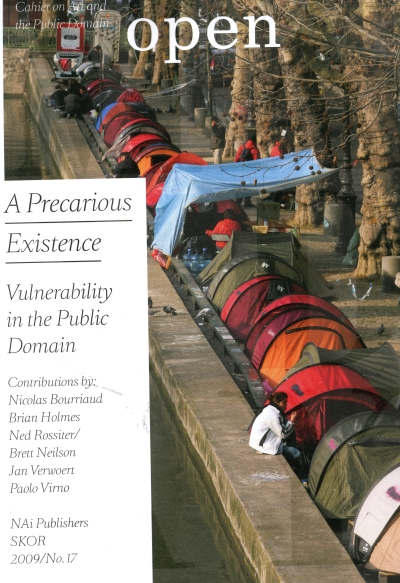
A Precarious Existence. Vulnerability in the Public Domain
For a few years now there has been an international discourse surrounding the notion of ‘precarity’ or ‘precariousness’, boosted by European social movements and philosophers such as Paolo Virno. Precarity refers to the relationship between temporary and flexible labour arrangements and an existence without predictability and security, which is determining the living conditions of increasingly larger groups in society.
Precarity occurs simultaneously at many places within society as a consequence of the neoliberal, post-Fordist economy with its emphasis on the immaterial production of information and services and continuous flexibility. The same is true of the creative sector: flexible production and outsourcing of work, typical aspects of the service economy, can also be seen in businesses devoted to art, culture and communication.
This issue of Open addresses precariousness in a cultural and social context and deals with such matters as the functioning of the art scene and the conditions of the precarious city and public space.
Jorinde Seijdel and Liesbeth Melis (eds.)
With contributions by Nicolas Bourriaud, Paolo Virno, Jan Verwoert, Ned Rossiter/Brett Neilson, Brian Holmes







